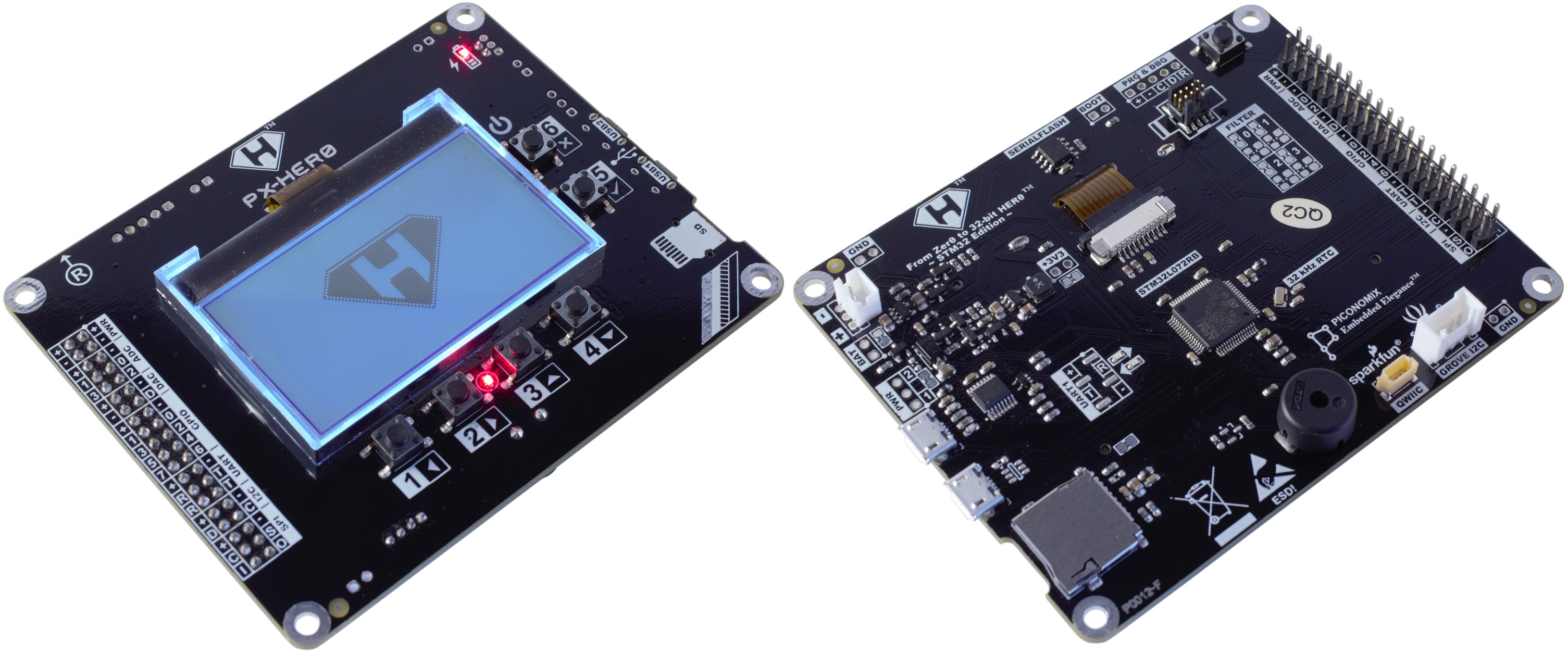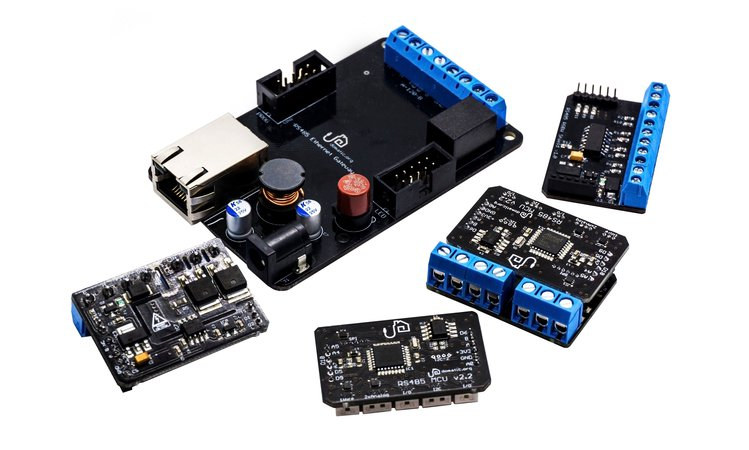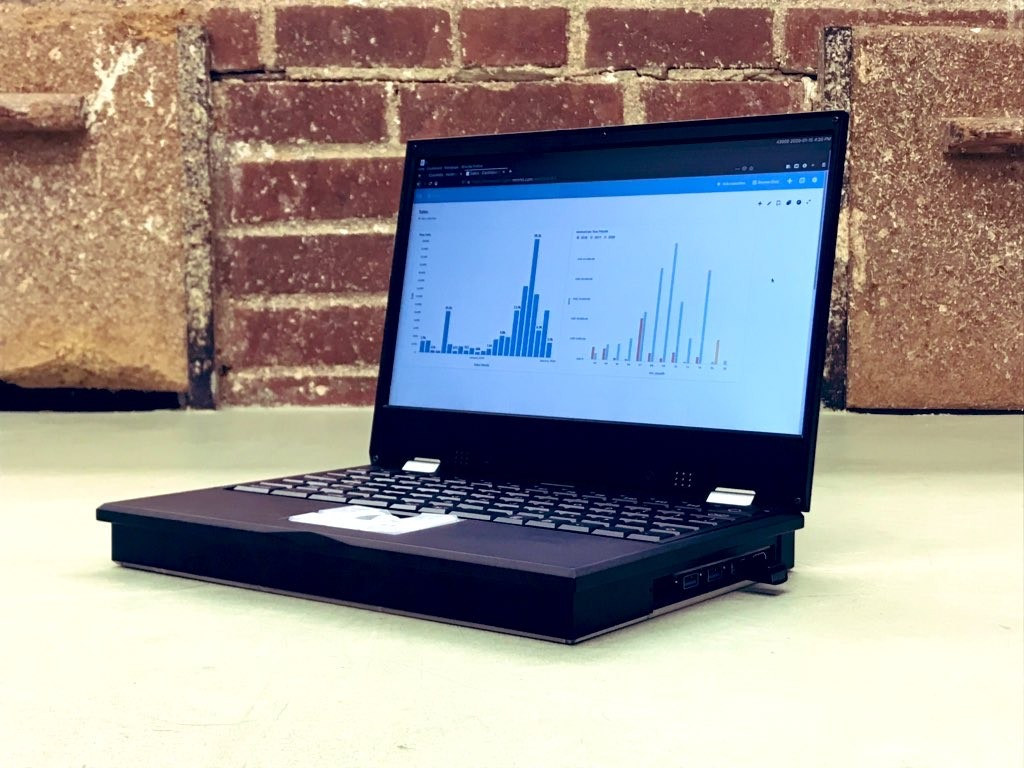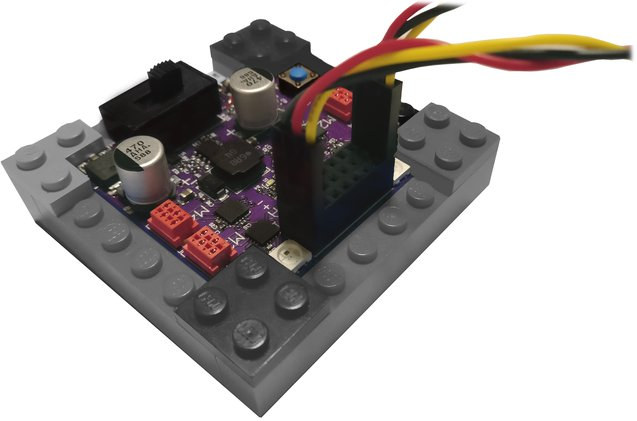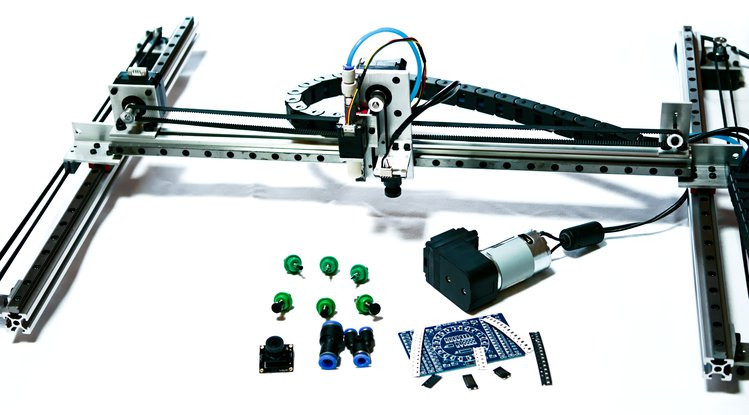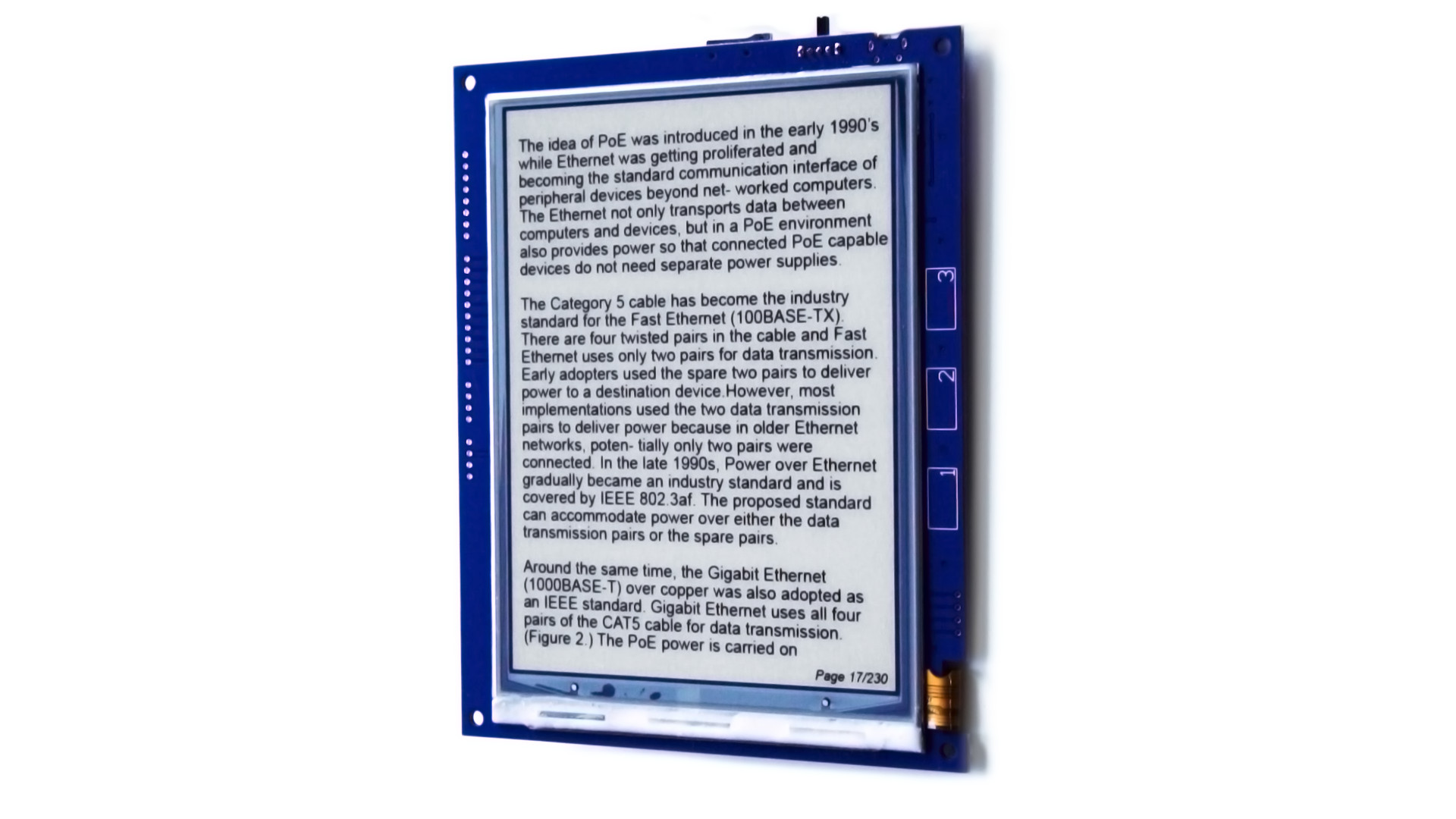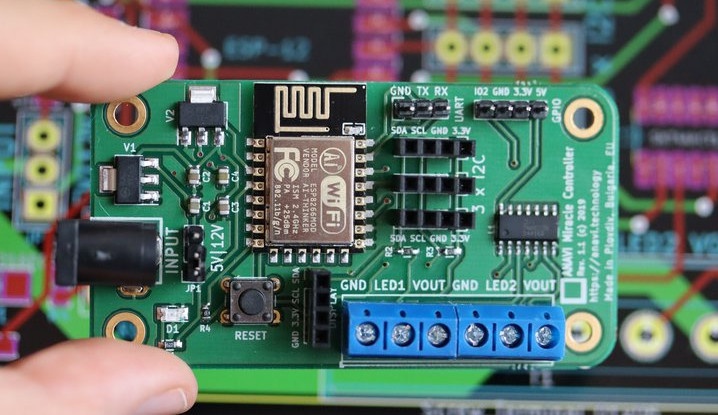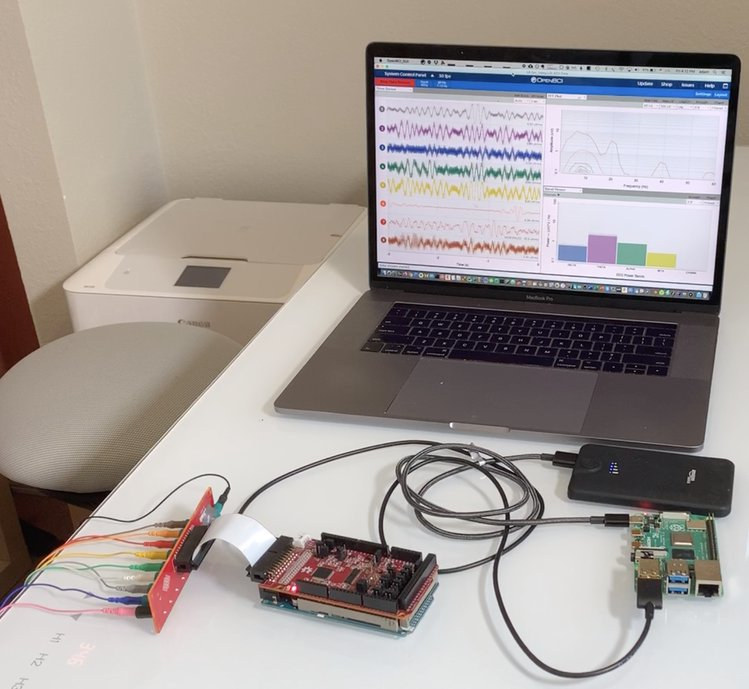PX-HER0 ARM Cortex Development Board and Ecosystem Piconomix is offering an embedded Arm Cortex-M0 development board that is aimed at the education, beginner maker, and enthusiast crowd. The PX-HER0 is a development board with an ecosystem of sourcing materials for learning the entire ARM structure through an open-source C library and full documentation. The Basics of the Board The PX-HER0 is a low-power board, running an STM32 MCU with an Arm Cortex-M0 core. There is an LCD Display, that is viewable even in direct sunlight, and the entire package is lightweight and very functional. Mass Storage To activate the bootloader, a double-tap of the RESET button, and the mass storage drive HERO-BOOT appears in the host computer. Drag and Drop are active and the UF2 file can be dragged right to the drive. The Ecosystem The ecosystem for the PX-HER0 is backed by an extensive C Library and documentation […]
GetWired Aims to Make RS-485 Wired Home Automation Affordable and User-friendly (Crowdfunding)
You may think about installing a home automation system, and WiFi may appear like the obvious way to go since it removes the need for cumbersome cabling, but wired networks are more reliable and secure, and there’s no need for batteries to be recharged or replaced. However, such wired home automation systems may be difficult to install and are often expensive, so Domatic decided to work on a solution to lower the costs and improve the ease of installation and use. Meet GetWired RS-485 wired home automation solution. Getwired is comprised of four modules communicating over the standard RS-485 protocol: MCU Module based on Microchip ATMEGA328PB MCU @ 8 MHz with 64KB SPI flash, an RS-485 transceiver, a 12-pin interface for connecting shields and 6 different Molex connectors for I/O including PWM, analog, interrupt pins, as well as I²C and 1-wire interfaces – Dimensions: 40 x 25 mm 2SSR Shield […]
MNT Reform 2 Open Source DIY Arm Linux Modular Laptop Coming Soon (Crowdfunding)
We first covered MNT Reform in fall of 2017, when it was a prototype for a DIY and modular laptop powered by NXP i.MX 6QuadPlus processor, and with plans to eventually use i.MX 8 hexa-core processor. Last year they designed several beta units of Reform to get feedback for a dozen users, and have now fully redesigned the laptop based on an NXP i.MX 8M system-on-module with the crowdfunding campaign expected to go live in February on Crowd Supply. MNT Reform 2 specifications: SoM – Boundary Devices Nitrogen8M SOM with SoC – NXP i.MX 8MQuad quad-core Cortex-A53 processor @ 1.5 GHz, 1x Arm Cortex-M4F real-time core Vivante GC7000Lite 3D GPU System Memory – 4GB LPDDR4 Storage – Probably none Networking – Atheros Ethernet MAC chip (AR8035) 200 pin SO-DIMM edge connector exposing USB 3.0, PCIe, MIPI DSI, etc… Dimensions – 67.6mm x 48.4mm Motherboard Storage – SD card slot, M.2 […]
Snekboard Controls LEGO Power Functions with CircuitPython or Snek Programming Languages (Crowdfunding)
LEGO has provided robotics kit for years, and LEGO blocks and accessories in general are great to build all sort of projects, so it’s not surprising third-parties have come up with LEGO-compatible boards and accessories for makers which include DFRobot BOSON kits, STEMTera smart breadboard, Brixo LEGO blocks with built-in electronics, and more. Snekboard is another option with the Microchip SAMD21 board designed to work with LEGO Power Functions motors and switches are programmable with MicroPyhon based CircuitPython or Snek programming languages. Snekboard hardware specifications: Microcontroller – Microchip SAMD21G18A Arm Cortex-M0 MCU with 256 KB flash and 32 KB RAM. Storage – 2MB SPI flash USB – 1x Micro USB port for power and programming Motor Control – 4x TI DRV8800 DC motor drivers tp provide up to 2.8A for LEGO motors and servos I/O- 8x GPIOs (3.3V) Misc – 2x RGB LEDs, 1x blue LED Power Supply 5V via […]
SimplePnP is a Low-Cost, Open Source Hardware Pick-and-Place Machine (Crowdfunding)
If you have a small production run for your board, it may not be cost-effective to ask a factory to manufacture it for you, and assembling the boards entirely by hand will be a time-consuming process. Getting a pick-and-place machine to automate the process would save time, but even the cheaper models on Aliexpress cost several thousand dollars. Citrus CNC tries to address the cost issue with the SimplePnP open source hardware pick-and-place machine that brings the price down to several hundred dollars. SimplePnP key features and specifications: MCU – Microchip Atmega328p running GRBL firmware Motor Drivers – TMC2209 stepper for two-phase stepper motors Word Area – 300 mm (X) x 300 mm (Y) Z Travel – 23 mm Components per Hour – 750 with vision assist Component Size – As small as 0402 (1005 metric) Vacuum Heads – Single vacuum head (base model), or optional dual-head Nozzle System – […]
Inkplate 6 ESP32 Wireless e-Paper Display Recycles Kindle E-reader (Crowdfunding)
Inkplate 6 wireless display is made from recycled e-Paper display taken from a used Amazon Kindle E-reader and adds WiFi (and Bluetooth) connectivity thanks to an ESP32-WROVER module featuring Espressif Systems ESP32 dual-core processor. The 6″ e-Paper display can easily be updated over WiFi, and used for a variety of applications or projects such as high-latency digital signage displays, collaborative task trackers, e-Paper typewriters, open-hardware E-readers, art projects and so on. Inkplate 6 specifications: ESP32-WROVER wireless module ESP32 dual-core Tensilica LX6 processor @ 240 MHz 8MB RAM, 4MB flash Connectivity – 802.11 b/g/n WiFi and Bluetooth 4.2 Display – 6″ e-Paper Display (ED060SC7) with 800×600 resolution taken from discarded Kindle readers; refresh time: 0.264 s; partial updates possible Storage – MicroSD card socket USB – 1x Micro USB Port for power and programming (via CH340C) Expansion EasyC / Qwiic connector with I2C Headers for power signals, I2C, SPI, ESP32’s GPIO, […]
ANAVI Miracle Controller WiFi Board Drives Addressable LED strips (Crowdfunding)
Last year, we wrote a tutorial showing how to control an RGB LED strip Control ANAVI Light ESP8266 controller. The board only works with standard non-addressable 12V LED strips however, and Leon ANAVI received requests to support 5V and 12V addressable LED strips such as NeoPixels, WS2811, WS2812, or TM1804. So he updated ANAVI Light Controller design and has now launched a new open-source hardware certified board based on ESP8266 WiFi chip: ANAVI Miracle Controller. ANAVI Miracle Controller specifications: MCU – Espressif Systems ESP8266 Tensilica L106 32-bit processor Connectivity – Wi-Fi 4 802.11 b/g/n LED Strips Support – Up to two 5V or 12 V addressable LED strips; Supported models include WS2812, WS2812B, WS2811, TM1804, etc. (LED strip chipsets supported by the FastLED library) Expansion 4x I2C header for mini OLED display, sensors, and others 4-pin “GPIO” header with 1x GPIO, GND, 3.3V, and 5V signals Misc – Reset button, […]
HackEEG Arduino Shield Reads Signals from Your Brain (EEG), Muscles (EMG), and Heart (EKG)
Biosignals are signals from living beings that can be continually measured & monitored, and some common methods to measure those biosignals include electroencephalogram (EEG) to monitor the electrical activity in your brain, electromyography (EMG) for recording the electrical activity produced by skeletal muscles, and electrocardiogram (EKG or ECG) to measure electrical activity of your heartbeat. Those can be used for brain interfaces which according to a recent Ericsson’s report may become commonplace by 2030 with users just thinking about commands, prosthetic arms, health and disease monitoring, and so on. Starcat has designed the HackEEG shield to experiment with all those three methods using an Arduino board and electrodes. HackEEG features and specifications: TI ADS1299 8-Channel, 24-Bit ADC for biopotential measurements SPI EEPROM for storing configuration data 8x analog-digital conversion (ADC) channels, each with a 24x programmable-gain amplifier (PGA). Up to 4x shields can be stacked on one Arduino Due for […]


